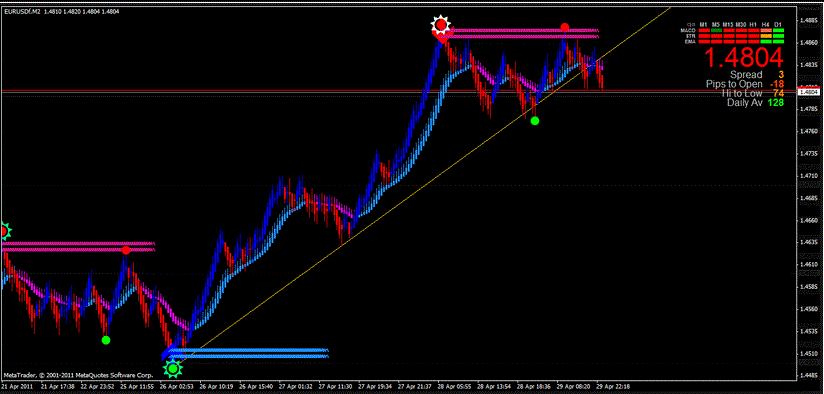A trading indicator is a mathematical calculation or visible illustration of market information utilized by merchants and buyers to research and forecast future worth movements in monetary markets. These indicators help merchants make knowledgeable decisions about shopping for or selling assets similar to shares, currencies, commodities, or cryptocurrencies. Trading indicators are an essential a part of technical evaluation, a technique that relies on historical price and volume knowledge to predict future value tendencies. There are numerous types of buying and selling indicators, every serving a selected purpose. Prop Firm EA of trading indicators embody:
Moving Averages (MA):
Moving averages clean out price knowledge by calculating the common price over a specified time period. They help identify developments and supply support and resistance levels.
Relative Strength Index (RSI):
The RSI measures the speed and change of value movements to evaluate whether or not an asset is overbought or oversold. It ranges from zero to 100, with ranges above 70 indicating overbought situations and ranges beneath 30 indicating oversold circumstances.
Moving Average Convergence Divergence (MACD):
The MACD is a trend-following momentum indicator that consists of two shifting averages and a histogram. It helps establish adjustments in the strength, course, and length of a trend.
Bollinger Bands:

Bollinger Bands include a center band (a moving average) and two outer bands that represent standard deviations from the middle band. They help determine volatility and potential reversal factors.
Stochastic Oscillator:
The stochastic oscillator compares the closing value of an asset to its price vary over a specified period. It offers information about potential pattern reversals.
Ichimoku Cloud:
The Ichimoku Cloud is a comprehensive indicator that gives details about help and resistance levels, trend direction, and momentum. It consists of several lines and a cloud area.
Fibonacci Retracement:
Fibonacci retracement ranges are based mostly on the Fibonacci sequence and are used to identify potential help and resistance levels. Traders use these ranges to foretell value retracements.
Volume Oscillators:
Volume indicators, such as the On-Balance Volume (OBV), give consideration to trading volume. They assist assess the strength of price actions and potential development reversals.
Average True Range (ATR):
The ATR measures market volatility by calculating the typical vary between excessive and low prices over a specified interval. It helps traders set stop-loss and take-profit levels.
Parabolic SAR (Stop and Reverse):
The Parabolic SAR indicator offers potential entry and exit factors by plotting dots above or beneath the price chart. It helps establish pattern reversals.
Williams %R:
Williams %R is a momentum oscillator that measures overbought and oversold circumstances. It ranges from -100 to 0, with values under -80 indicating oversold circumstances and values above -20 indicating overbought circumstances.
Average Directional Index (ADX):
The ADX measures the strength of a trend, regardless of its direction. It helps merchants assess the strength of a current development and potential trend reversals.
Traders use a mixture of those indicators and others to develop trading strategies, make informed choices, and handle risk. It's important to note that trading indicators aren't foolproof, and merchants ought to use them in conjunction with other types of evaluation and risk administration methods. Additionally, the selection of indicators and their parameters can vary depending on the trader's specific buying and selling type and objectives..
